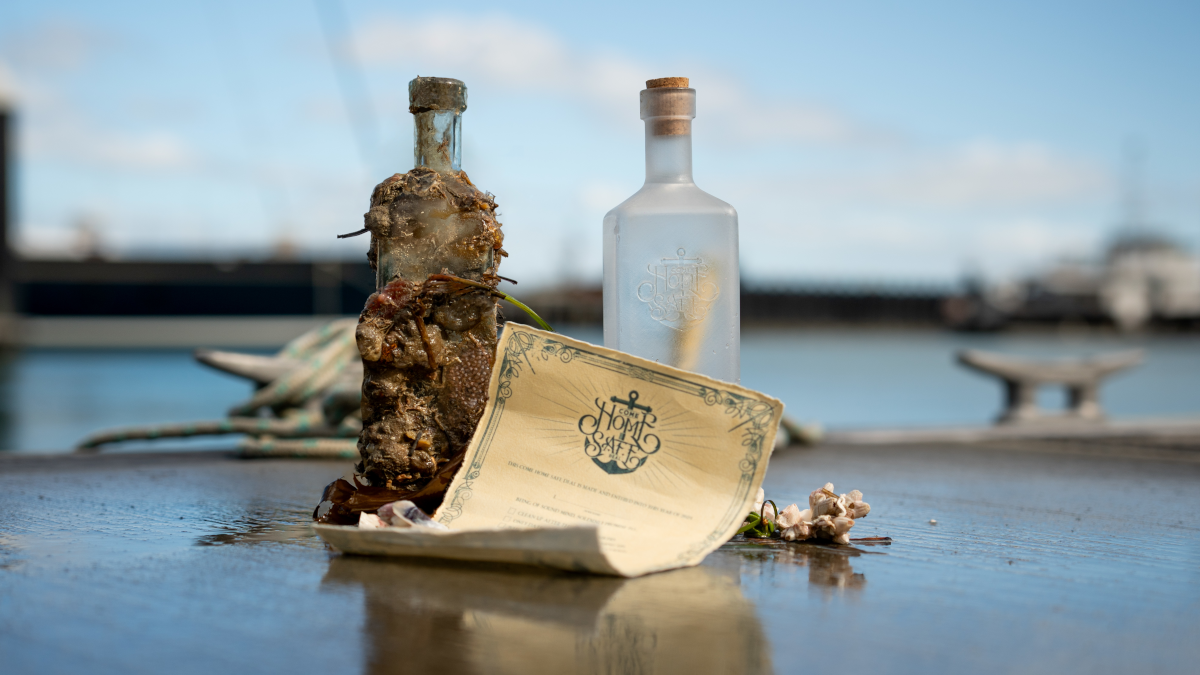New Zealand’s maritime regulatory agency delivered messages in a bottle to ‘boaties’, as part of the campaign leveraging context and the strengths of direct mail to drive home a message about water safety.
Maritime New Zealand’s ‘come home safe deal’ campaign was created by Auckland ad agency Federation, to reduce the number of drowning deaths in the country’s waterways.
The campaign employed choice architecture and associative priming by asking Kiwi boat enthusiasts (‘boaties’) to promise their families they would follow safety guidelines.
As part of the campaign, the Maritime agency created the ‘come home safe deal’ — which looked like a legal document — and put copies of the agreement in bottles. The bottles were kept under the sea for a year, to make them look like authentic messages from sailors of old, and then delivered to New Zealanders when they were in or by the water.
‘We [also] had placements across marina out of home, targeted digital and social, and broad reach through radio’, said Brad Collett, Federation’s chief creative officer. ‘The key, however, was to talk to these people directly, by way of messages delivered straight to their boats, kayaks, jet skis and stand-up paddleboards.’
Around 1.7 million adults in New Zealand regularly use or own some type of watercraft, and men over 45 are one of the demographics with the highest risk of drowning.
But when Federation conducted research to answer Maritime New Zealand’s brief, they discovered that boaties all had the same mindset of ‘It’ll never happen to me.’
The reception to the campaign from the boating community was positive. The ‘come home safe deal’ received good feedback from the National Safer Boating Association Forum, government ministers, key New Zealand Olympians, and made prime-time news.
There were also over 5,000 unique visits to Maritime New Zealand’s website, with 4,116 contracts written and sent in the opening days of the campaign.
As well as encouraging behaviour change by shifting considerations of water safety to before people go into the water, and leveraging contextual media placements to deliver the message, the campaign took advantage of the power of an unexpected and direct medium to boost its effectiveness.
If messages in a bottle can be considered a type of direct mail, Marketreach and WARC’s ‘The Attention Advantage’ report states that nearly 2 in 3 people say direct mail attracts their undivided attention, and this method drives uplift for both awareness and consideration. It’s also more cost efficient, compared with other types of media.
In addition, over 70 per cent of people say this method makes them feel valued, and that they prefer physical documents when the message is of a sensitive or personal nature. With this in mind, when coupled with Federation’s strategy to have these messages come, very personally, from friends and family, meant the impact on boaties to change their behaviour was likely further amplified.
The authentic manner in which these bottles were presented to lovers of the ocean, all covered in barnacles and weathered, likely also helped.

